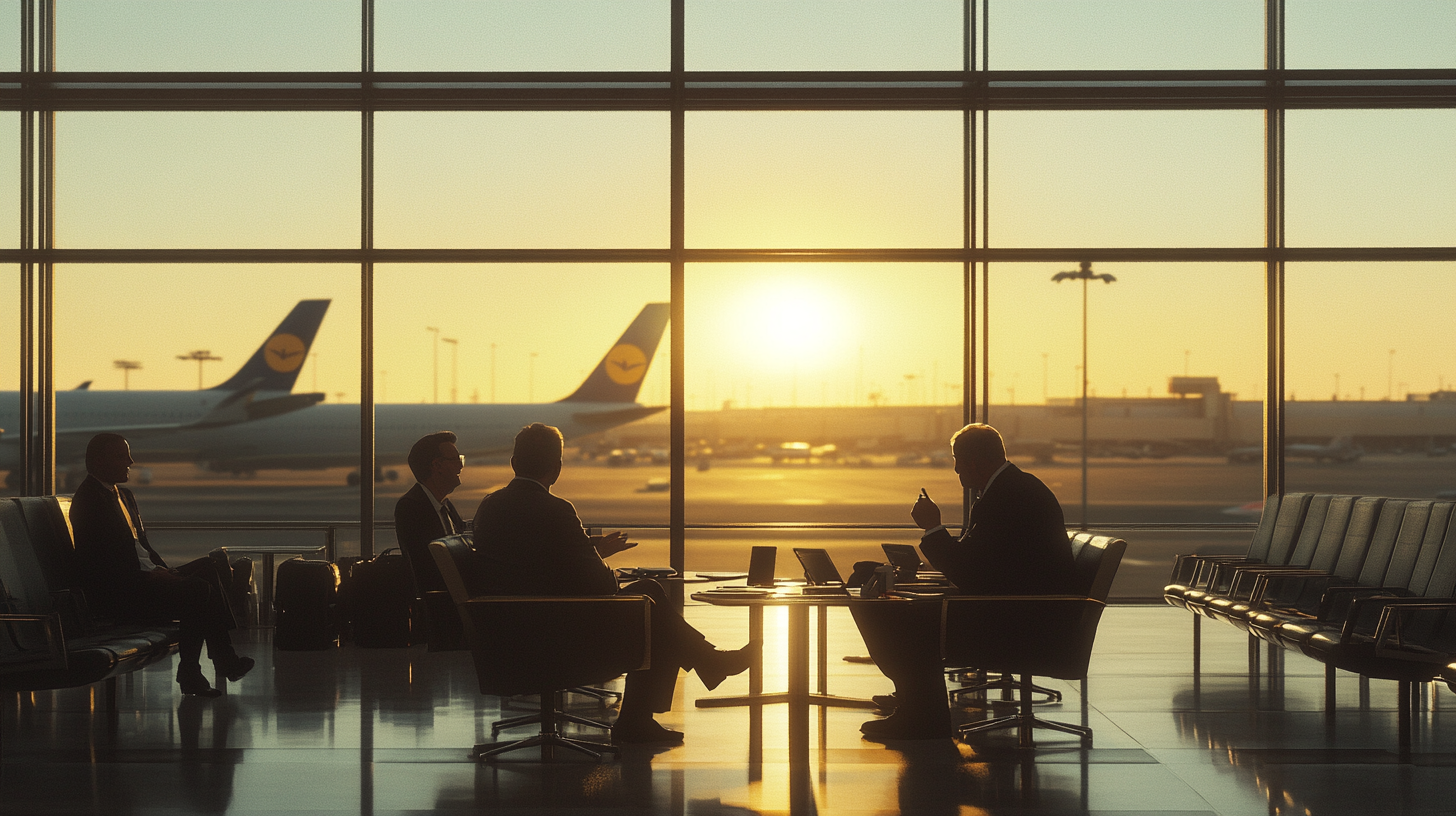5 Reasons Every Frequent-Flyer Business Needs a Travel Policy

Business travel can feel like a constant balancing act, especially if you’re always on the go. For me, a solid corporate travel policy is a lifesaver—whether I’m stretching out in a coveted exit row or just taking in the clouds from a window seat. It’s not just about rules; it’s about ensuring everyone can focus on the journey without worrying about the details.
1. Streamlined Booking and Approvals

When I chat with fellow frequent flyers, I’m reminded how chaotic planning can get without a clear booking framework. A travel policy sets up an easy roadmap—who to book with, which airlines are preferred, and what flight classes fit the budget. According to a 2024 report from the Global Business Travel Association, companies that use standardized booking procedures reduce errors and miscommunication by nearly 30%. That’s a lot of headaches saved.
In my own experience, a central reservation system or travel management software is the gold standard. Not only does it speed up approvals, but it also collects company data in one place. By tracking flight patterns, expenses, and booking trends, I’ve seen businesses tweak their travel approach on the fly—literally—so employees get the best possible seat at the best possible rate.
When everyone knows the guidelines, there’s less swirling confusion. It’s like having that perfect seat where you can settle in quickly, knowing exactly how much legroom you’ll get. And with fewer last-minute changes, you avoid flight-time fiascos and cost overruns.
2. Expense Clarity and Cost Control

Let’s face it—no one likes tricky expense reports. If you’ve ever tried justifying each coffee and in-flight Wi-Fi charge on the road, you know it can get complicated fast. By having a detailed expense breakdown in the travel policy—covering meal per diems, hotel rate limits, and transportation allowances—everyone’s on the same page. This transparency reduces confusion when the receipts start stacking up.
In my observations, organizations that clearly state their reimbursement procedures see smoother finance operations. A recent study from Business Travel News in early 2025 indicates that 62% of companies saved an average of 12% on annual travel costs simply by implementing consistent guidelines. That’s money that can go toward bigger goals or additional perks for employees.
Plus, I’ve noticed that disciplined expense procedures empower teams. When people understand the budget boundaries, they can make creative cost-saving decisions. From opting for midday flights (often cheaper and less crowded) to selecting hotels with extended stay benefits, employees can enjoy business trips without hitting turbulence on the financial front.
3. Ensuring Safety and Care

I’ll never forget the time I got stuck overnight in an unfamiliar airport after a sudden cancellation. Having a clear emergency protocol in the travel policy helps you know exactly which steps to take in moments like these. Practical elements—like access to a 24/7 support line and details on travel insurance—can make all the difference when a trip goes off-script.
Duty of care is more than a legal or corporate term; it’s a promise to employees that their well-being is a top priority. From guidelines on recommended airlines that meet strict safety standards to contact lists for local medical help, these policies ensure travelers can navigate disruptions more confidently. According to the 2025 Global Aviation Safety Report, companies that implement robust duty-of-care measures see a 17% drop in employee travel-related incidents.
Personally, I regard any trip as a miniature expedition. It pays to have backup. For instance, if a flight gets canceled or there’s an emergency abroad, the policy might provide steps for immediate rebooking and lodging arrangements. When there’s a plan, it’s easier to relax and enjoy the journey—even if that means catching a few winks at an airport lounge.
4. Leveraging Technology and Partnerships

In this era, a solid Wi-Fi connection can be just as important as an upright seatback. By integrating travel-focused apps and platforms, businesses keep tabs on everything from flight changes to data usage. I’ve observed how eSIM tools, like Airalo for Business, streamline connectivity so teams can stay productive without worrying about crippling roaming costs. It’s a straightforward way to keep the lines of communication open, no matter how many time zones you cross.
Additionally, partnerships with reputable travel management companies or HR platforms yield big benefits. According to industry data from 2025, businesses that adopt such solutions see faster approval times by up to 40%. Straight from my own travels, I’ve noticed that these unified platforms allow for real-time itinerary updates, quick expense logging, and fewer last-minute booking nightmares.
When the right tech is in your corner, you have more time to enjoy the flight—whether it’s watching the world pass by at 35,000 feet or finalizing a presentation before landing. It’s a seamless experience that never feels forced, especially when policies and technology align smoothly.
5. Aligning with Company Values and Sustainability

Sustainability is a buzzword, but it’s also a frontrunner for businesses serious about their global impact. I’ve flown enough red-eyes to see firsthand how eco-conscious choices—like paperless ticketing and carbon offset programs—make a difference over time. A travel policy that emphasizes green practices says it all: we care about the planet without compromising comfort.
Recent carbon footprint calculators show that choosing direct routes, fuel-efficient aircraft, or public transport to the airport can reduce emissions by up to 25%. This data is a game-changer for businesses wanting to meet their environmental targets. I’ve seen teams get creative, too: from virtual interviews to eco-friendly lodging, there are myriad ways to trim a company’s carbon output.
In my seat-hunting approach, I’ve realized that eco-friendly travel doesn’t have to mean inconvenience. By writing a well-defined sustainability clause into the policy, employees feel encouraged to choose longer layovers or airlines with modern fleets, knowing these choices align with the company’s mission. It’s all part of making the skies friendlier—both for us and the environment.
Final Thoughts

A travel policy isn’t some restrictive manual—it’s a toolkit to help any company’s frequent flyers hit cruising altitude without turbulence. By ensuring bookings are made properly, expenses are kept transparent, and safety is front and center, policies can transform stressful trips into well-organized journeys.
Companies that harness modern tech and align with sustainability are investing in a future where business travel is both efficient and purposeful. As I’ve seen time and again, a policy that covers these bases ultimately empowers everyone—managers and flyers alike.
Ryder’s Take
If there’s one thing I’ve learned from the thousands of trip experiences I’ve surveyed, it’s that you can’t always predict what happens in transit. A thorough travel policy fills in the gaps, smoothing out everything from booking to landing, so travelers can focus on the moment rather than panic over the details.
When every seat and every flight feels like a natural extension of your company’s values, you’re that much closer to an ideal journey. There’s nothing like kicking back with a window view, knowing you’re covered on all fronts—both in policy and in practice.






